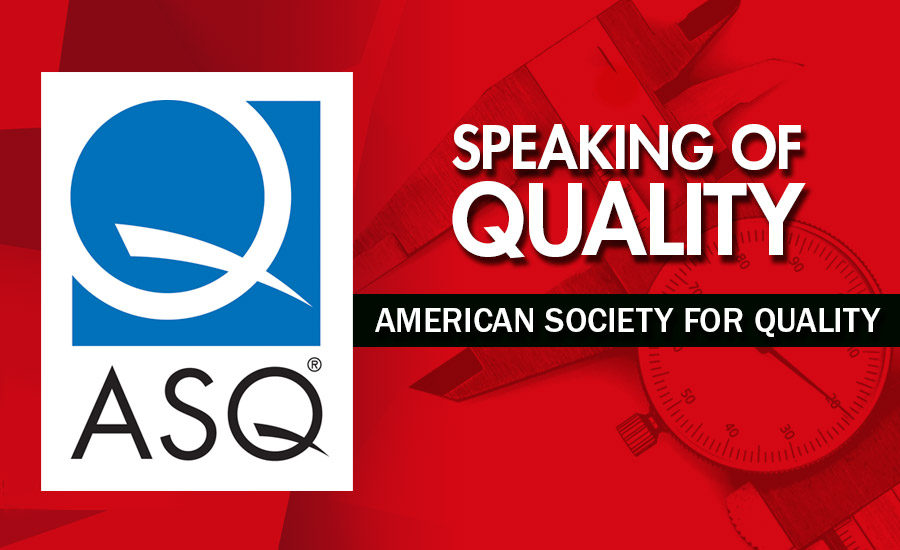As quality professionals, you may or may not be directly involved in managing your company’s supply chain. You might be in an organization large enough to have a quality department in the purchasing/procurement group. If you work in a smaller company, procurement/purchasing manages your supplier relationships and you work with your internal team on the quality issues. Whether you are managing your supply chain or simply affected by it, we should be able to agree on this: The supply chain is complex, dynamic, and manageable.
See if the following scenario looks familiar—either as it directly or indirectly applies to your role.
The first quarter of 2017 is complete. Your company celebrated a successful product launch and the remaining 2017 products are on target. You’re looking forward to seeing the numbers, convinced they’ll be excellent. A fine start to the year, one that you’re sure is going to continue in the coming months. Then, your supplier calls. They had a rare quality issue with an intricate part. Your parts are now on backorder.
You knew this would happen sooner or later. Even the best suppliers make mistakes. What you don’t understand is why your supplier doesn’t have another supplier for this part. It seems inexcusable. You calmly—as calmly as you possibly can—ask that the purchasing agent call the sales representative and really lay into him. And, then, the agent innocently asks, “So you want me to call our secondary supplier?” You take a deep breath and shake your head. Your company made the same mistake—there is no secondary supplier. A product delay is inevitable. You immediately get on the internet and conduct some research for additional suppliers.
The 2017 ASQ Manufacturing Outlook Survey -- Background and More Results
More than 1,125 manufacturing professionals from around the world responded to ASQ’s 2017 Manufacturing Outlook Survey, which was conducted online in November and December. In addition to questions about their organization’s supply chain, the annual Manufacturing Outlook Survey also questioned respondents about their financial outlook for 2017.
Nearly 72% of the respondents said they expect an increase in their company’s revenue in 2017.
Furthermore, 74% of respondents said they expect salary increases in 2017, up from 61% in the 2016 survey, and 46% said they expect their company to increase staff, compared to 37% last year.
But while respondents are confident their companies will increase revenue, the economy as a whole continues to be the top hurdle facing organizations. According to the survey, more than 36% of respondents cite the economy as their greatest hurdle in 2017, down from 40% of respondents in last year’s survey.
For more about this and other ASQ surveys and reports, visit asq.org/quality-resources.
ASQ Survey Checks Manufacturers
This story obviously doesn’t take into account the complexities of the supply chain or supplier relationships. However, it does make clear a statement from the recent ASQ 2017 Manufacturing Outlook Survey. The survey revealed “83% of manufacturers have been adversely affected in the past by suppliers’ inability to meet their needs.” Respondents to the survey represented a multitude of industries, including aerospace, automotive, food, and medical device (see sidebar).
“Supply chain plays a critical role in manufacturing, and companies simply can’t risk being without the necessary material they need to be successful,” said ASQ past chair Pat La Londe. “Companies need to carefully consider multiple options when faced with a shortage of materials or suppliers that can’t meet their needs.”
While one-third of the companies anticipate a shortage of parts or services in 2017, the planning for these occurrences is important to a company’s success. Survey results show 66% of manufacturers expecting a problem with suppliers are working closely with providers to resolve issues, while 35% are working with their suppliers’ competitor. Some manufacturers are stockpiling parts, while others are expanding operations to create the necessary parts themselves.
These are all proactive approaches but might not be enough. The most recent studies from the Chartered Institute of Procurement & Supply (CIPS) risk index (cips.org) shows global supply chain risk is at an all-time high. This could mean that while the ASQ survey shows that the majority of companies are taking a proactive approach to supply chain risk, it might not be enough. Fifty-nine percent of the ASQ survey respondents state their organizations have a formal process to address supply chain risk. With 83% of respondents expecting a supplier issue that will have a negative business result, there are companies that will be caught in a similar situation to our example. You want to make sure your company isn’t on the wrong side of that equation.
For more, here are two helpful ASQ webcasts:
Managing External Supplier Quality Webcast: The Challenge of Our Times
The Positive Impact of Supplier Quality Management Webcast









